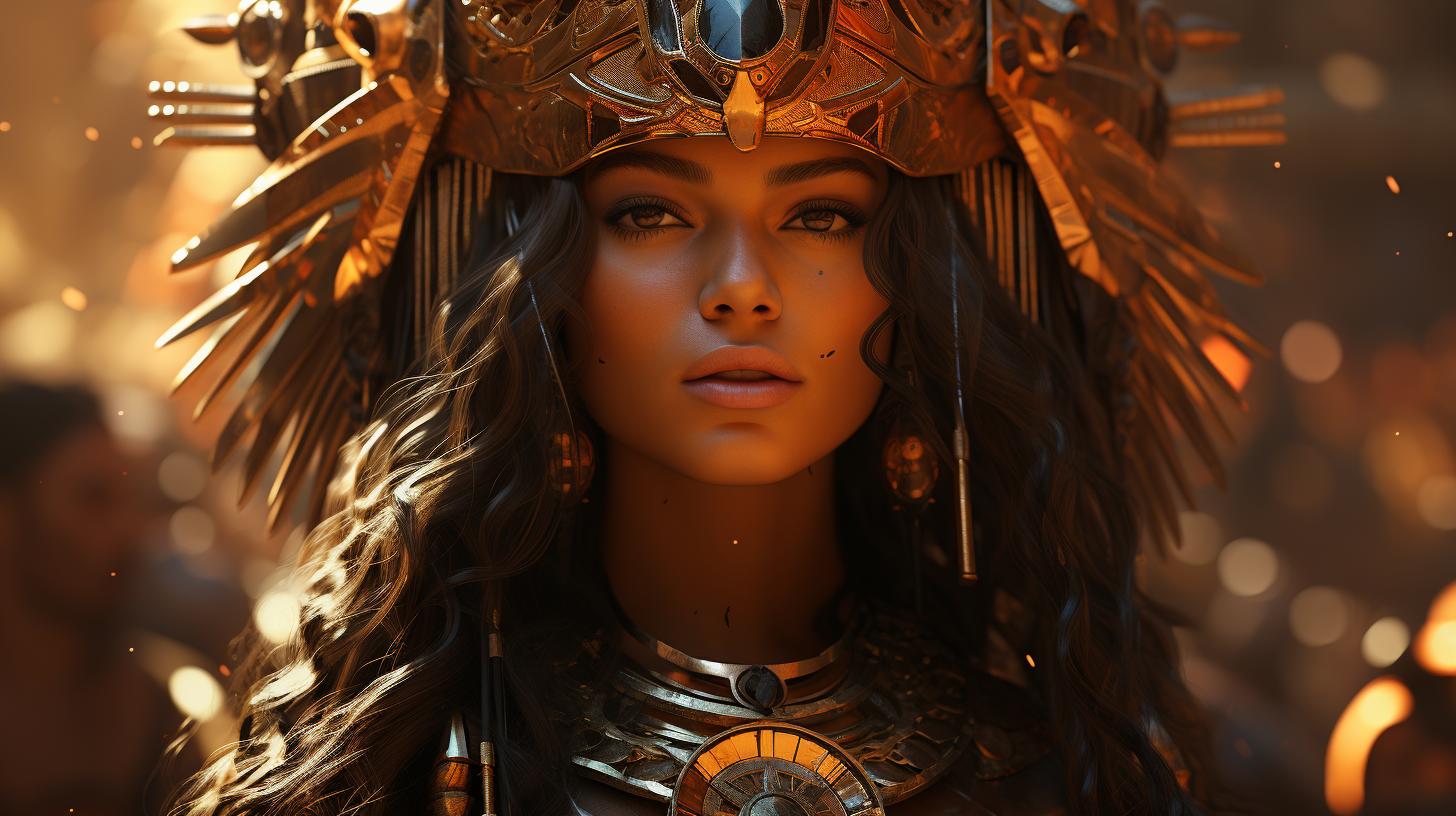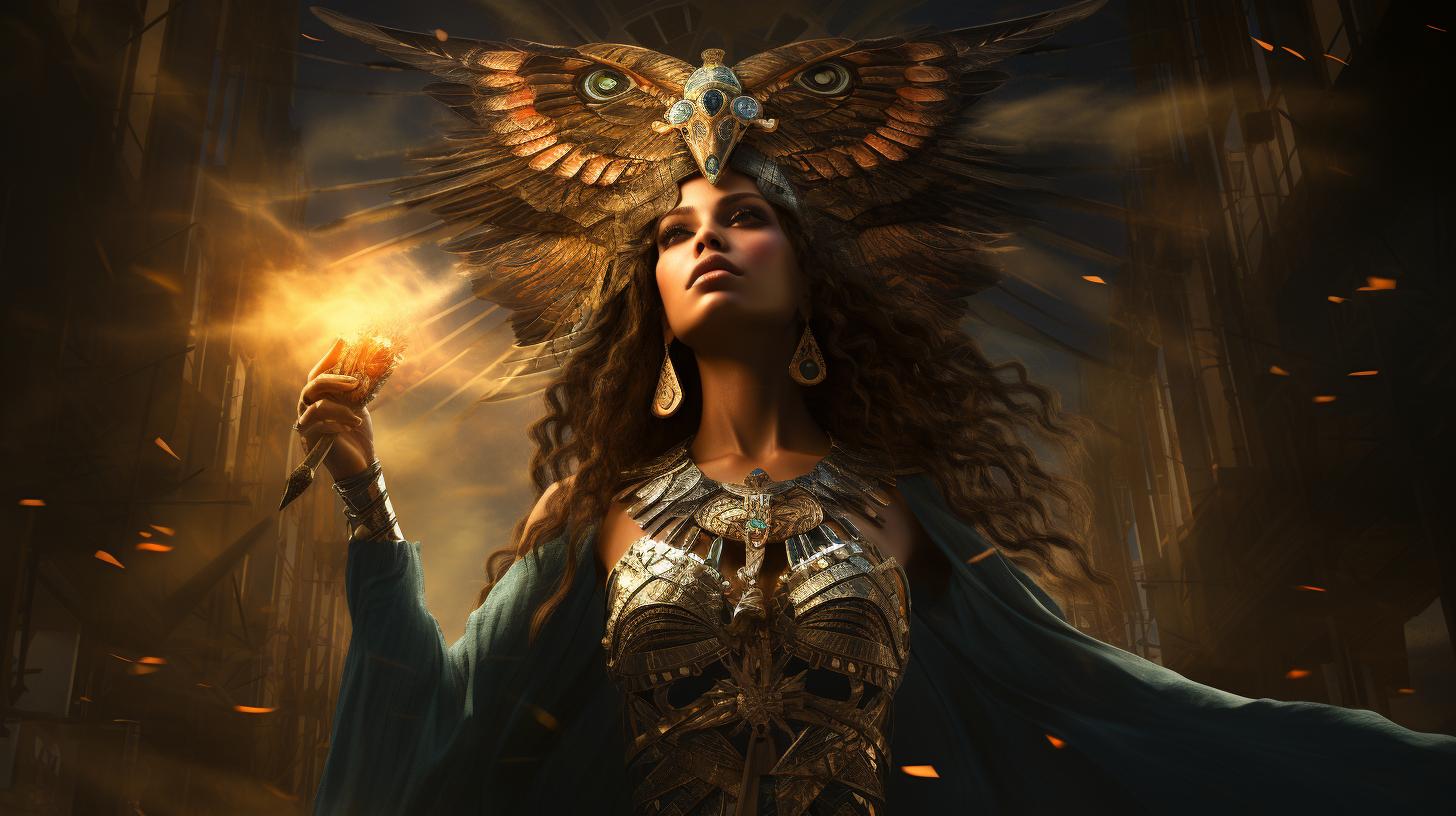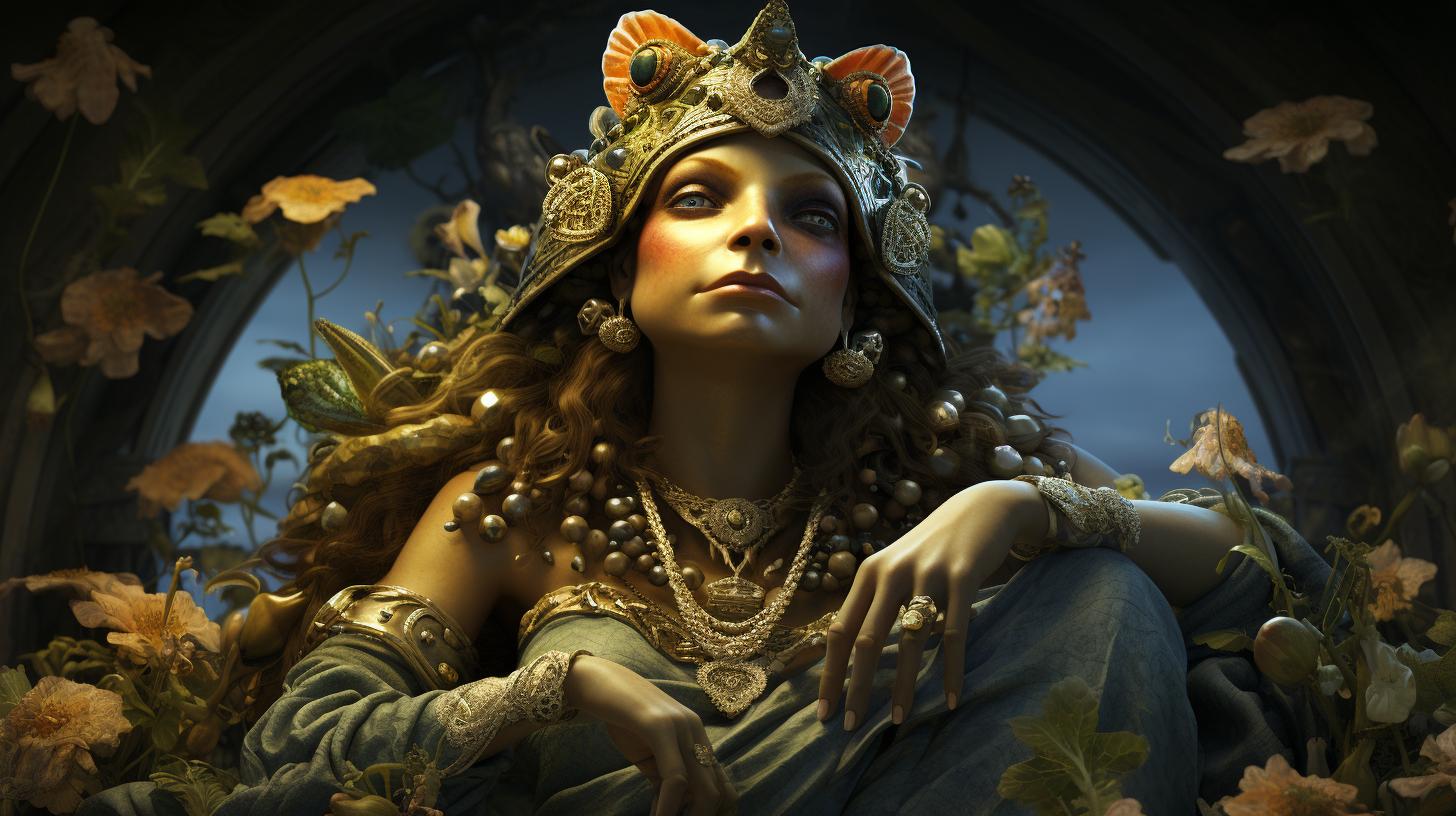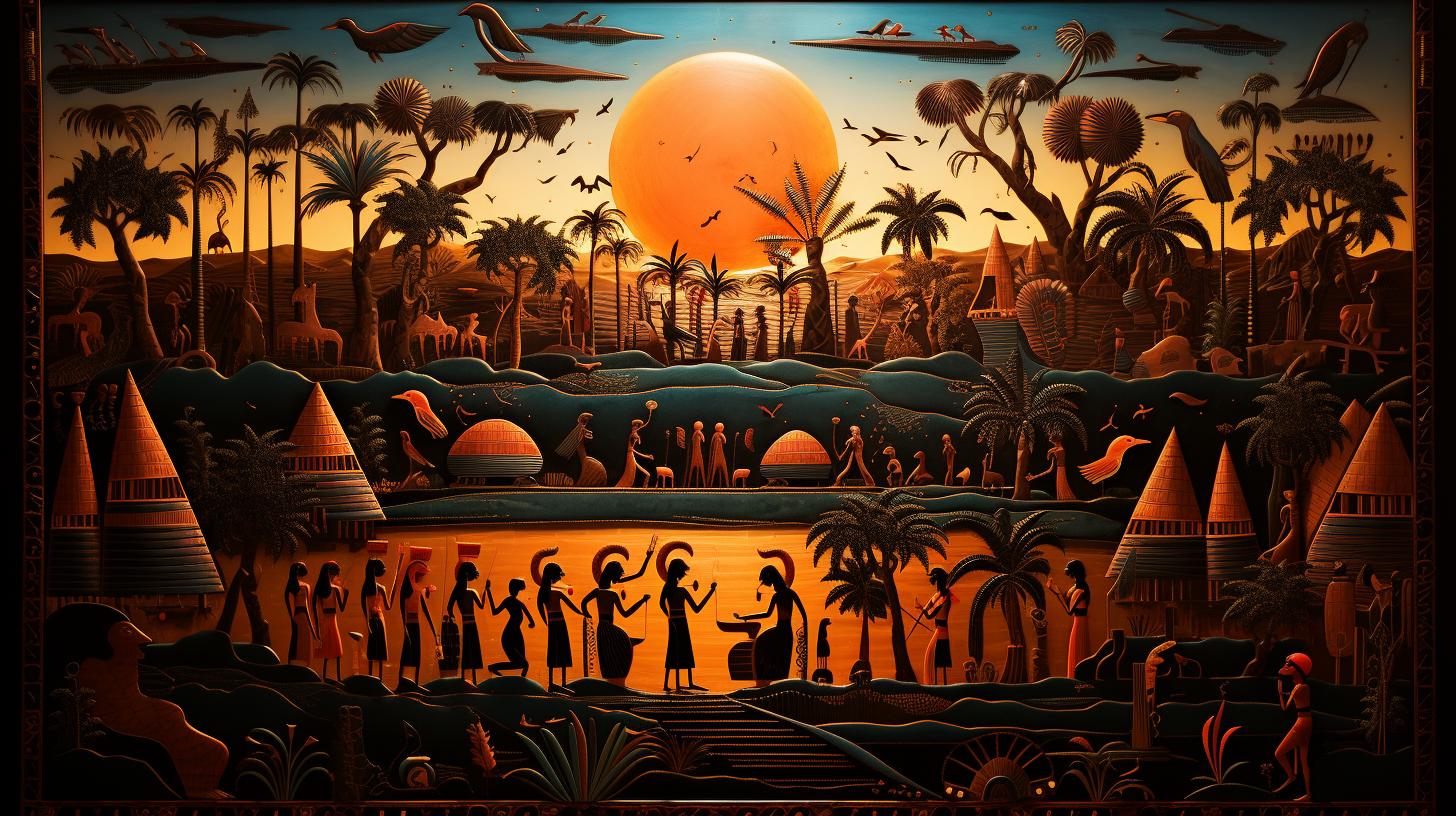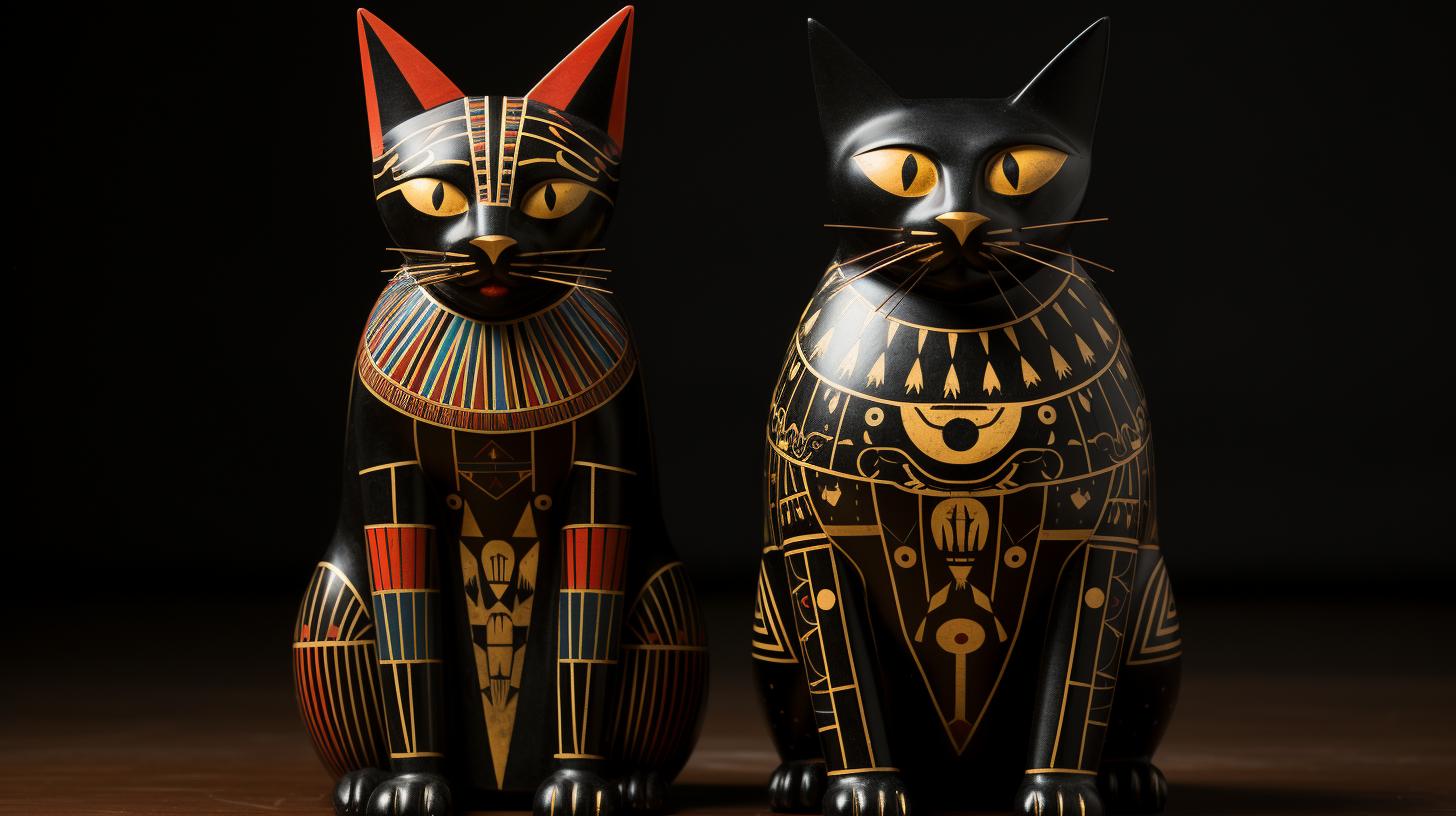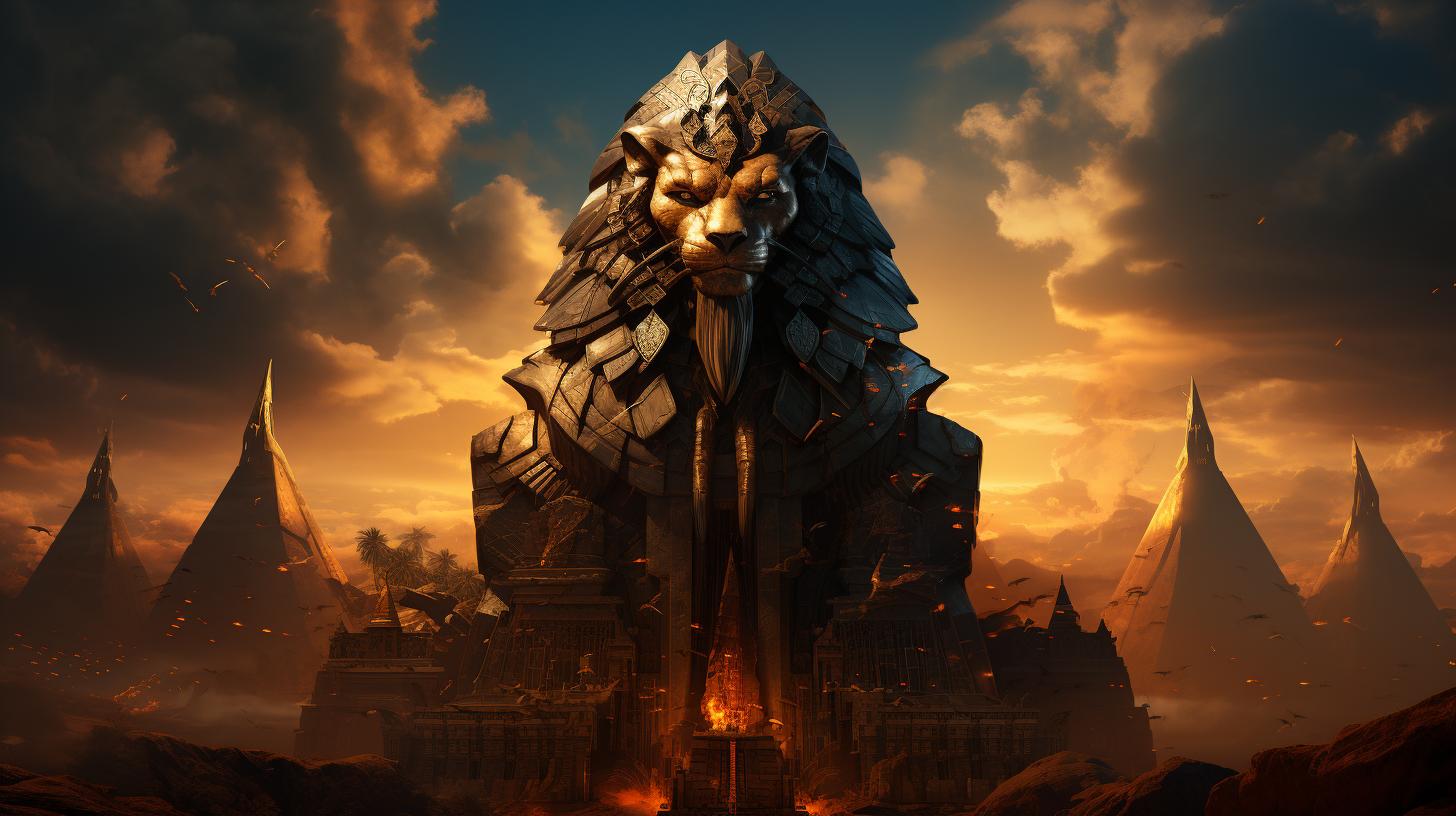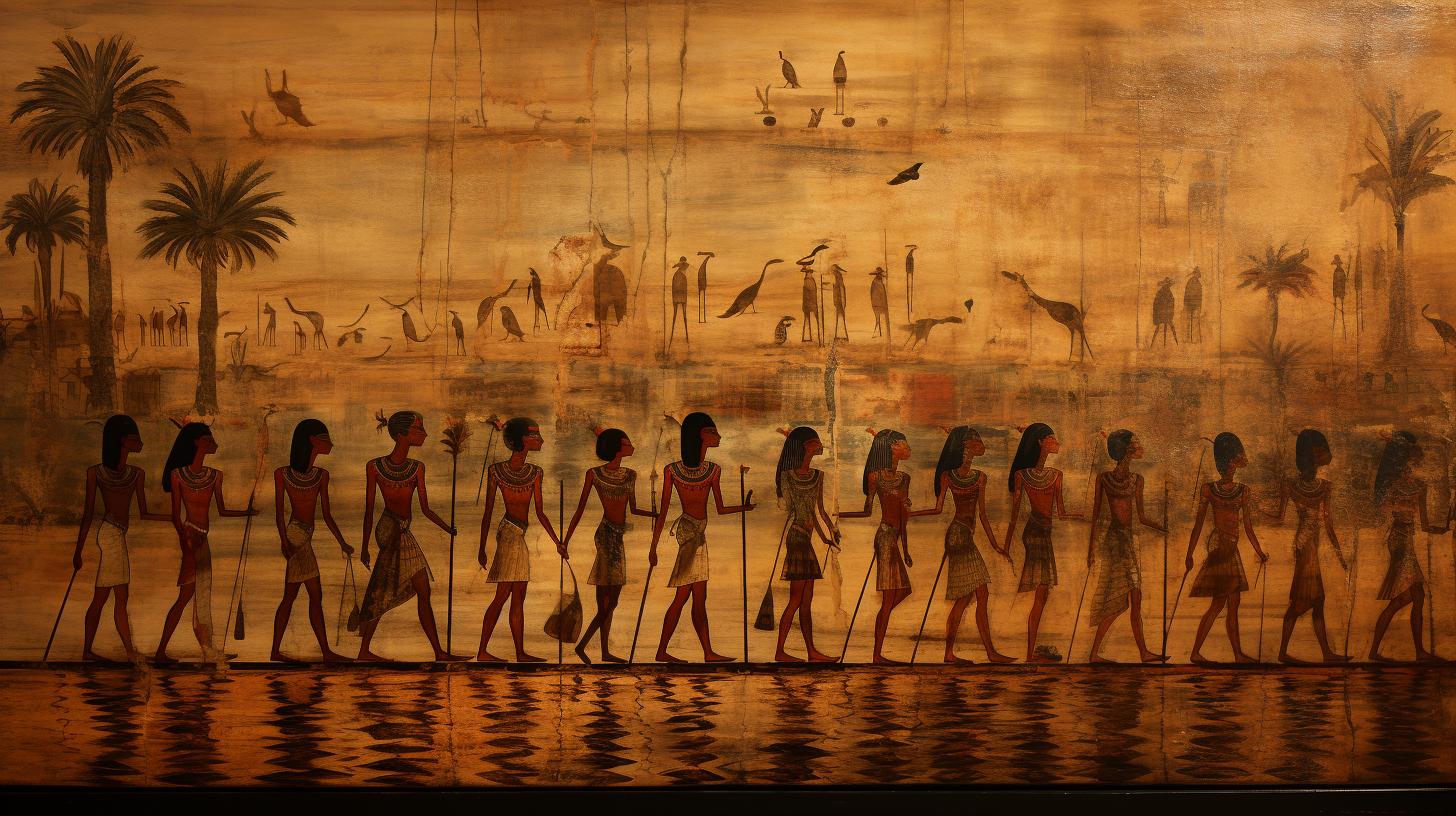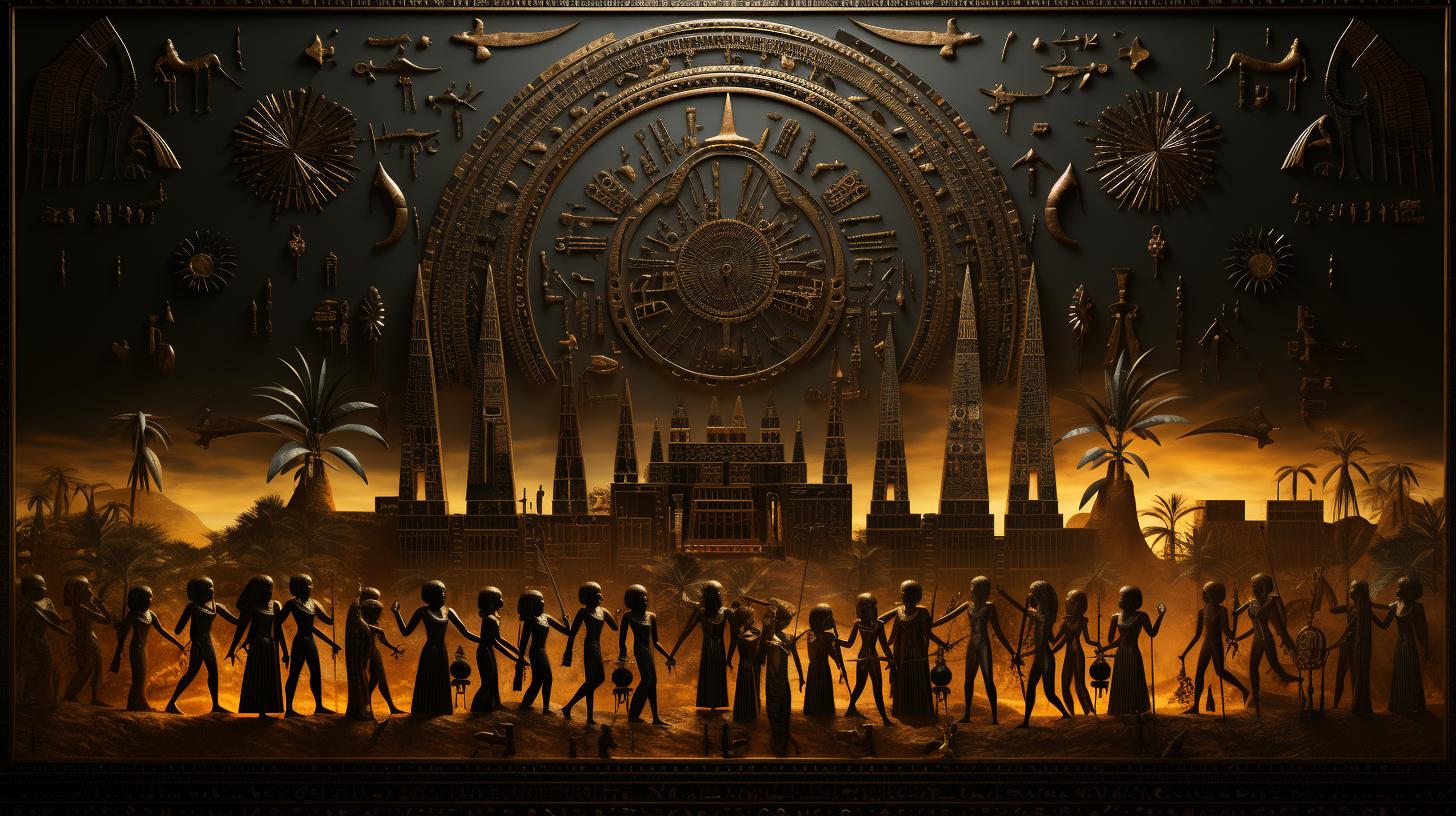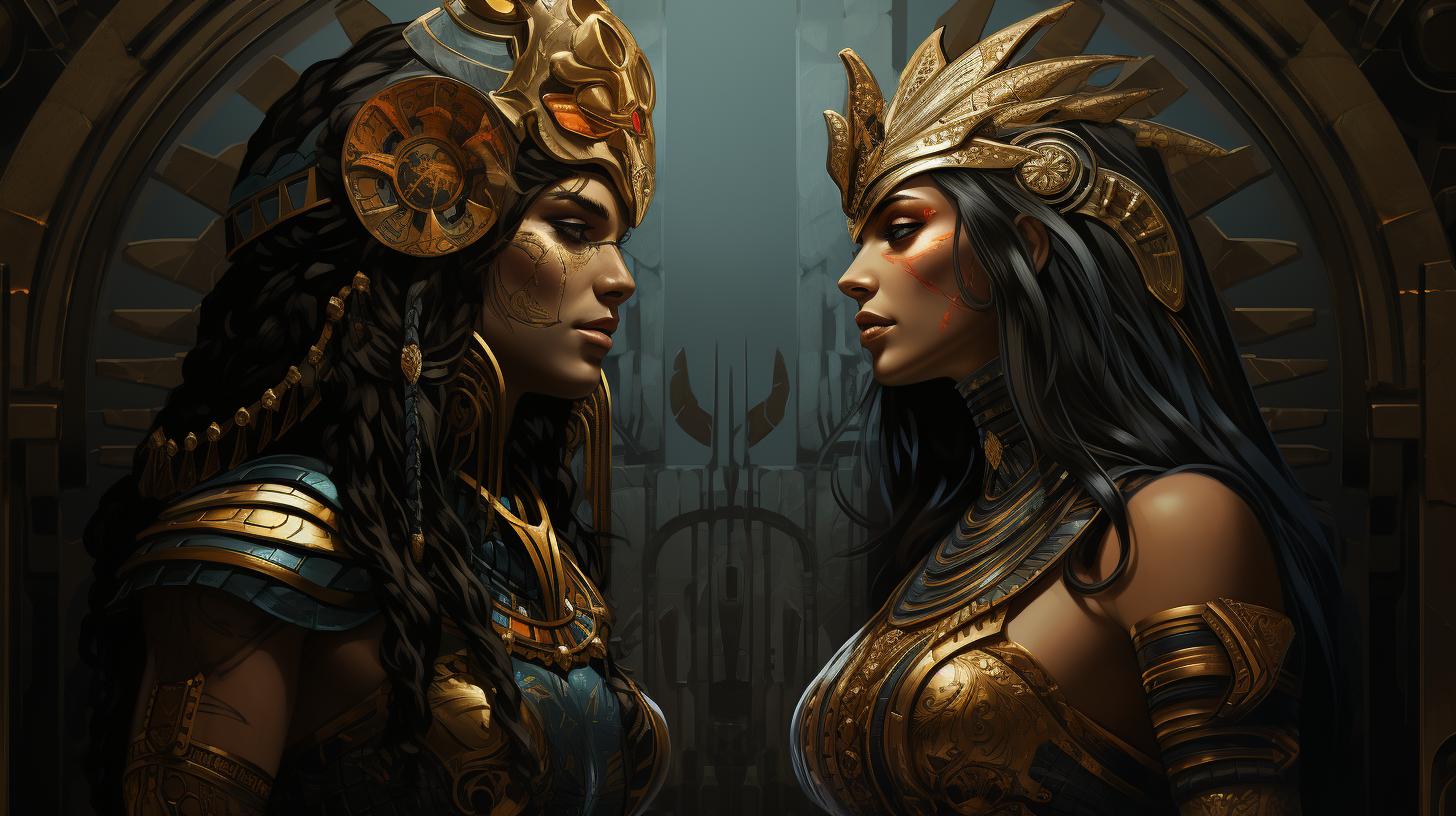Ancient Egyptian Goddess Neith: Exploring the Mysteries of Egypt’s Powerful Deity
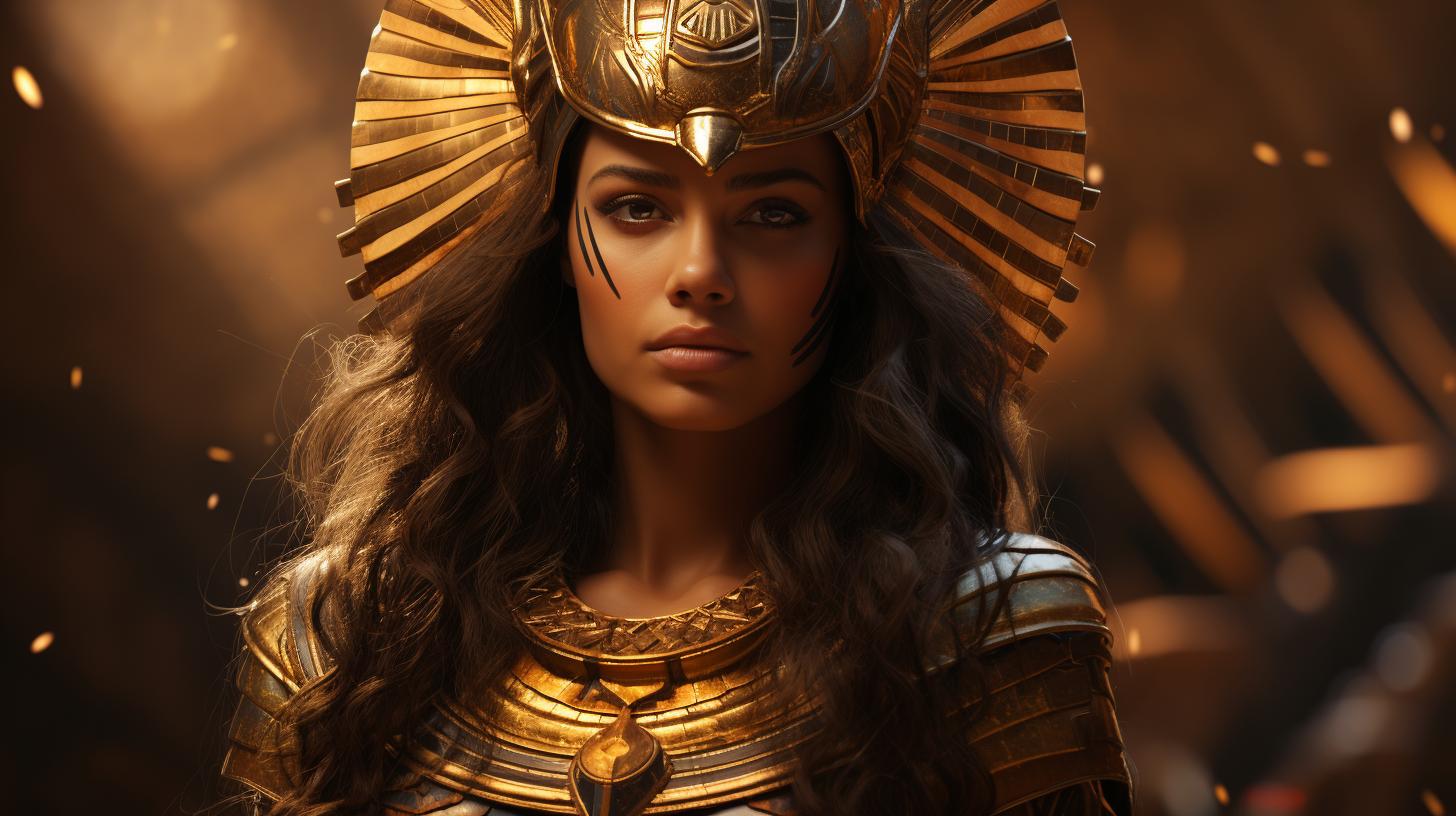
Neith, the ancient Egyptian goddess, held a significant place in the civilization’s mythology and religious practices. Worshiped as the goddess of creation, wisdom, weaving, and warfare, she was also revered as a funerary deity.
Neith’s influence extended beyond Egypt, with connections to Astarte of Phoenicia and Ishtar of Mesopotamia. This article explores various aspects of Neith’s role, symbolism, association with the afterlife, and her presence in different ancient civilizations.
Unveiling the enigma surrounding Neith, delve into the mysteries of this influential deity in ancient Egypt.
Neith, the powerful ancient Egyptian goddess, encompassed a wide range of roles and attributes. Venerated as the deity of creation, wisdom, weaving, and war, she played a crucial part in Egyptian mythology and creation myths.
Neith’s symbolism included her distinctive crown, weaponry, and tools for protection. The goddess’s significance extended to battles and warfare, while also being associated with the primeval waters and considered the mother of Ra and Sobek. Let us uncover the intriguing facets of Neith, her presence in the afterlife beliefs, and her worship beyond the borders of Egypt.
Ancient Egyptian Goddess Neith: Exploring the Mysteries of an Influential Deity
Welcome to our in-depth exploration of Neith, the ancient Egyptian goddess whose significance resonated from the pre-dynastic times until the Roman domination. This enigmatic deity was revered as the goddess of creation, wisdom, weaving, and warfare, and was also considered a guardian of the dead.
In this section, we will delve into the origins and historical significance of Neith, her role in Egyptian mythology and creation myths, her patronage of Sais and influence beyond Egypt, as well as her intriguing role as a protector and judge of the departed souls.
Origins and Historical Significance
Neith’s origins can be traced back to the early days of ancient Egypt, even before the establishment of the dynasties. She held a prominent position throughout Egyptian history, remaining a revered deity until the Roman era.
Understanding the historical context and significance of Neith provides valuable insights into her enduring worship and influence.
Neith as the Goddess of Creation and Wisdom
Among her many roles, Neith was venerated as the goddess of creation and wisdom. Ancient Egyptians believed that she played a crucial part in the formation of the world and was revered as the mother of gods such as Ra and Sobek. Discover the fascinating aspects of Neith’s connection to creation and her association with wisdom and knowledge.
Neith’s Role in Egyptian Mythology and Creation Myths
Neith’s presence can be found in numerous Egyptian myths and creation stories. As a powerful deity, her influence extended beyond mere creation, shaping the beliefs and narratives that defined the ancient Egyptian civilization.
Explore the intriguing tales and symbolic significance surrounding Neith in the rich tapestry of Egyptian mythology.
Neith as the Patron Deity of Sais and Beyond Egypt
One of the key centers of Neith’s worship was the city of Sais in the Nile Delta, where she held the status of patron deity. However, Neith’s influence transcended the borders of Egypt, reaching other ancient civilizations and being identified with counterparts like Astarte in Phoenicia and Ishtar in Mesopotamia.
Uncover the extent of her worship beyond Egypt and the connections she forged with other cultures.
Neith as the Protector and Judge of the Dead
Besides her role in creation and wisdom, Neith played a crucial role in the afterlife beliefs of ancient Egyptians. As a guardian and judge of the deceased, she ensured the well-being of the souls and presided over their judgment.
Discover the beliefs and rituals associated with Neith’s role as a protector and just adjudicator in the realm of the dead.
Neith’s Iconography and Attributes
Neith, the ancient Egyptian goddess, was often depicted in various forms that symbolized her power and significance. Her iconography and attributes provide deeper insight into her role and characteristics.
The Symbolism of Neith’s Crown and Other Attire
Neith was commonly depicted wearing a distinctive crown, known as the “Red Crown” or “War Crown.”
This crown represented her association with war and protection. It consisted of a conical shape with two curved feathers on either side. The crown symbolized Neith’s power to defend and safeguard her devotees during conflicts and battles.
In addition to her crown, Neith’s attire also included other symbolic elements. She often wore a flowing robe, which represented her role as the goddess of weaving. This represented her connection to craftsmanship, creativity, and the intricate design of fate.
Neith’s attire highlighted her multifaceted nature and the diverse aspects of her worship.
Depictions of Neith in Art and Sculpture
Artistic representations of Neith showcased her as a majestic deity, embodying strength, wisdom, and divine beauty. Sculptures often portrayed her in a standing position with regal composure, emphasizing her sovereignty. These depictions conveyed Neith’s significance as a divine mother, a nurturer, and a protector.
Artists also portrayed Neith in relief carvings, typically situated within temple walls or other sacred spaces. These carvings captured pivotal moments in her mythology, such as her involvement in creation myths or legendary battles.
Through these artistic mediums, Neith’s reverence and mythical narratives were immortalized and firmly embedded in ancient Egyptian culture.
Neith’s Weapons and Protective Tools
Neith was associated with several weapons and protective tools that further bolstered her image as a fierce warrior goddess. She was often depicted carrying a bow and arrows, symbolizing her skill in archery and her ability to strike down enemies on behalf of the deceased in the afterlife.
Neith’s bow and arrows represented her defense of the souls journeying into the next realm.
Additionally, Neith could be depicted holding a shield, signifying her role in protecting the deceased and ensuring their safe passage into the Afterlife.
This defensive attribute emphasized Neith’s position as a guardian and guide throughout the transition from life to death.
- Neith’s crown symbolized her association with war and protection.
- The flowing robe represented her role as the goddess of weaving.
- Artistic representations showcased her as a majestic deity.
- Relief carvings depicted pivotal moments in her mythology.
- Neith carried a bow and arrows, symbolizing her archery skills.
- A shield represented her role in protecting the deceased.
These symbols and attributes collectively underscored Neith’s prowess, nurturing nature, and her guardianship over the ancient Egyptian civilization.
Neith in War and Battle
Neith, the ancient Egyptian goddess, held a powerful presence on the battlefield as the goddess of war and a fierce warrior deity. Her connection to conflict and combat is evident in various aspects of Egyptian mythology and historical accounts.
Neith as the Goddess of War and Warrior Goddess
Neith was revered as the embodiment of strength, courage, and strategic warfare. As the goddess of war, she commanded respect and fear among both mortal warriors and gods alike. Neith symbolized the relentless spirit and determination required in battles, making her a beloved deity among soldiers.
Neith’s Involvement in Ancient Egyptian Warfare
Neith’s influence extended to the earthly realm, where she played an active role in ancient Egyptian warfare. Warriors sought her favor and protection before engaging in battles, believing that her guidance would lead them to victory.
Neith’s presence was particularly revered in times of national conflict, as her blessing was crucial for ensuring military success.
Legends and Stories of Neith’s Battles
The mythology surrounding Neith includes several captivating tales of her involvement in epic battles. One such legend recounts Neith’s role in aiding Horus, the falcon-headed god, in his fight against the usurper god Set.
Neith’s strategic prowess and divine might were instrumental in securing triumph over the forces of chaos and restoring order.
Another story tells of Neith’s valorous defense of the sun god Ra during his nightly journey through the underworld.
She skillfully fended off malevolent entities and unleashed her divine fury upon any who dared threaten Ra’s safe passage.
- Neith’s presence on the battlefield instilled fear in the hearts of her enemies.
- Warriors sought her blessings and protection before engaging in combat.
- Neith’s strategic abilities and dedication to preserving order were celebrated in ancient Egyptian legends.
Neith’s Connection to Creation and Birth
Neith, the ancient Egyptian goddess, possessed a profound connection to the concepts of creation and birth.
Throughout Egyptian mythology, Neith’s association with primeval waters and her role as the mother of Ra and Sobek showcased her central place in the origin stories of the world.
Neith’s Association with the Primeval Waters
Neith’s strong connection to creation can be observed through her association with the primeval waters.
In Egyptian mythology, these primordial waters were believed to have existed before the creation of the world and represented the source of life. Neith was revered as the guardian and sustainer of these waters, symbolizing her role in the birth and renewal of the universe.
Neith as the Mother of Ra and Sobek
Neith was revered as the mother of two prominent deities in Egyptian mythology: Ra, the sun god, and Sobek, the crocodile god. As the mother of Ra, Neith held a crucial role in the creation of the sun and its daily journey across the sky.
She was believed to have given birth to Ra through her divine power, solidifying her status as a nurturing and life-giving deity. Additionally, Neith’s connection to Sobek reinforced her association with fertility and birth, as Sobek was often seen as a symbol of virility and procreation.
Neith’s Role in Fertility and Childbirth
Beyond her role as a mother, Neith was also honored for her connection to fertility and childbirth. Egyptians turned to Neith for blessings in hopes of conceiving and having fruitful pregnancies.
As the goddess of weaving, Neith’s ability to create intricate patterns symbolically represented her influence over the creation of life. Her devotees sought her guidance and protection during childbirth, looking to her for assistance in ensuring safe deliveries and healthy infants.
Neith’s Influence and Worship Beyond Egypt
Neith, the ancient Egyptian goddess, extended her influence far beyond the borders of Egypt, leaving her mark in other ancient civilizations. Let’s explore some of the fascinating aspects of her influence and worship beyond Egypt.
Neith’s Identification with Astarte and Ishtar
In various ancient civilizations, Neith was often identified and associated with other prominent goddesses like Astarte of Phoenicia and Ishtar of Mesopotamia. This connection showcased the belief in a shared divine feminine archetype, with similar attributes and powers being attributed to these goddesses across different cultures.
Neith’s Presence in Other Ancient Civilizations
Neith’s influence reached beyond Phoenicia and Mesopotamia, leaving traces in other ancient civilizations as well. While the extent of her worship may have varied, her presence was acknowledged in different forms, demonstrating the cross-cultural admiration and reverence for this powerful deity.
Neith’s Role in the Rosicrucian Egyptian Museum
The Rosicrucian Egyptian Museum, located in the United States, is among the notable institutions where Neith’s legacy is celebrated. As goddess of creation, wisdom, and weaving, Neith’s symbolism and artifacts hold a significant place in the museum’s exhibits, inviting visitors to immerse themselves in the enigmatic world of ancient Egyptian mythology.
In conclusion, Neith’s influence and worship transcended Egypt, captivating the admiration of other ancient civilizations and finding her place in prestigious institutions like the Rosicrucian Egyptian Museum. Exploring these connections allows us to gain a deeper understanding of the widespread popularity and significance of this revered goddess.
Neith in Egyptian Afterlife Beliefs
Neith’s significance extended beyond her role in creation and warfare to encompass the realm of the afterlife. In ancient Egyptian belief, she held important responsibilities in guiding the souls of the deceased and played a crucial role as a just judge.
Neith’s Responsibility in Guiding the Souls of the Deceased
Neith was believed to have a crucial role in the transition of the souls from the physical realm to the afterlife. As the protector and guardian of the dead, she guided the departed through the perilous journey, ensuring their safe passage to the realm of the gods.
Neith’s Role as a Just Judge of the Dead
In the Egyptian belief system, Neith was revered as a fair and impartial judge of the deceased. She carefully evaluated the actions and deeds of the departed, weighing their hearts against the feather of Ma’at, the symbol of truth and justice.
Only those deemed worthy and righteous were granted eternal life.
Rituals and Offerings to Honor Neith in the Afterlife
Ancient Egyptians performed rituals and offered various tributes to honor Neith in the afterlife. These included prayers, offerings of food, clothing, and amulets, all intended to ensure her favor and protection for the departed.
These rituals aimed to create a strong connection between the deceased and the revered goddess.
Neith: Unveiling the Enigma of an Ancient Egyptian Goddess
Neith, the ancient Egyptian goddess, continues to captivate us with her enigmatic nature. Delving into the depths of Egypt’s rich mythology, we seek to unravel the mysteries surrounding this influential deity.
From her origins and historical significance to her role in creation myths and Egyptian belief systems, Neith’s presence resonates far beyond the boundaries of ancient Egypt.
Exploring Neith’s iconography and attributes, we discover the symbolism behind her crown and other attire.
Art and sculpture depict Neith in various forms, showcasing her power and significance. Her weapons, such as bows and arrows, and protective tools further highlight her role as a guardian and warrior.
In the realm of war and battle, Neith emerges as a formidable goddess. Known as the goddess of war and a warrior herself, she played a vital role in ancient Egyptian warfare.
Legends and stories recount her involvement in battles, instilling awe and fear in the hearts of her enemies.
Neith’s connection to creation and birth deepens our understanding of her divine essence.
Associated with the primeval waters, she is revered as the mother of Ra and Sobek, underscoring her role in the cycle of life and fertility. Neith’s influence extends to childbirth, where she is called upon for protection and guidance.
Beyond the borders of Egypt, Neith’s influence and worship extend to other ancient civilizations. Identified with goddesses like Astarte of Phoenicia and Ishtar of Mesopotamia, Neith’s universality is reflected in her wide-ranging appeal.
Moreover, her presence in the Rosicrucian Egyptian Museum further solidifies her significance among those who appreciate ancient Egyptian culture.
In the realm of the afterlife, Neith assumes a pivotal role. As the guide of souls and a just judge of the deceased, she safeguards the paths of the departed.
Rituals and offerings are made to honor Neith in the afterlife, ensuring a smooth transition for the souls under her watchful eye.
Unveiling the enigma of Neith allows us to glimpse the intricacies of ancient Egyptian belief systems.
Her multifaceted nature continues to fascinate, prompting us to delve deeper into the mysteries that surround her. Explore the mesmerizing world of Neith and discover the profound influence she had on the ancient Egyptian civilization.
.











